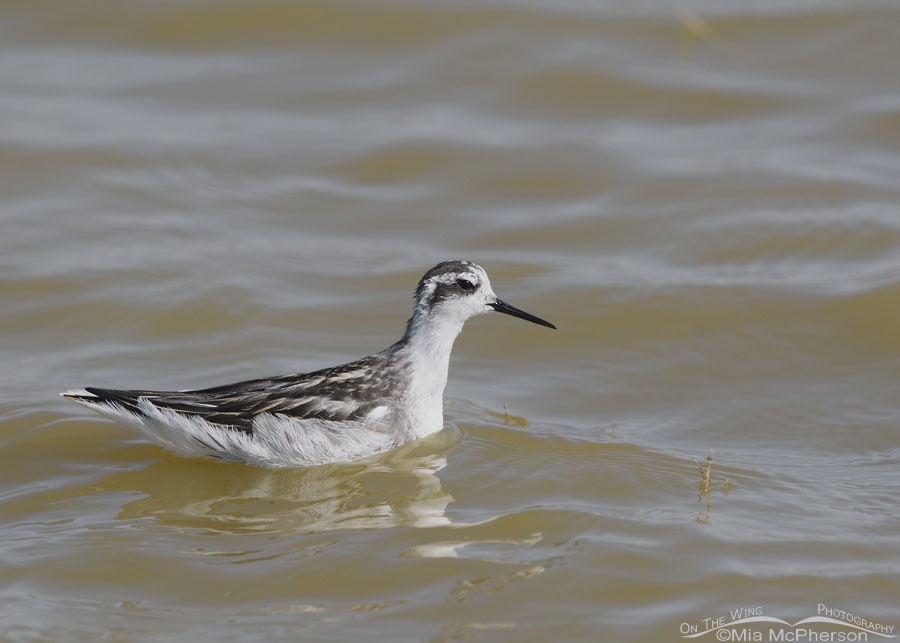 Red-necked Phalarope in the wetlands of Bear River MBR – Nikon D500, f7.1, 1/1600, ISO 500, Nikkor 500mm VR with 1.4x TC, natural light
Red-necked Phalarope in the wetlands of Bear River MBR – Nikon D500, f7.1, 1/1600, ISO 500, Nikkor 500mm VR with 1.4x TC, natural light
Two days ago after leaving the auto tour route at Bear River MBR I was able to photograph two phalarope species in a wetlands that were feeding side by side. The phalarope that caught my eyes immediately was the Red-necked Phalarope because it was smaller and more strongly patterned. I jumped on the chance to photograph The Red-necked Phalarope since I didn’t have any close up images of this species. Prior to two days ago I only had photos of them in flocks in flight.
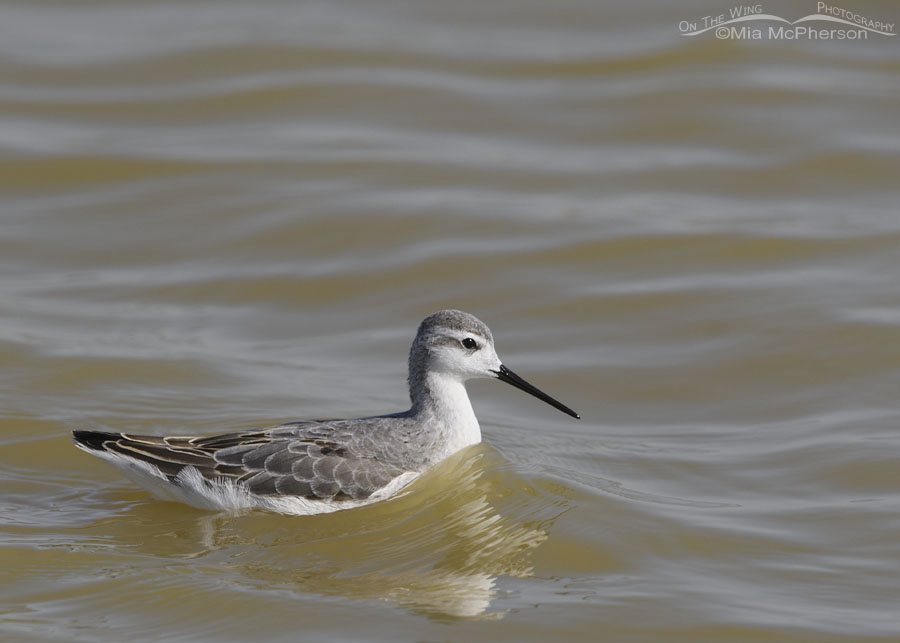 Adult Wilson’s Phalarope in nonbreeding plumage – Nikon D500, f7.1, 1/2000, ISO 500, Nikkor 500mm VR with 1.4x TC, natural light
Adult Wilson’s Phalarope in nonbreeding plumage – Nikon D500, f7.1, 1/2000, ISO 500, Nikkor 500mm VR with 1.4x TC, natural light
The adult Wilson’s Phalarope in nonbreeding plumage didn’t escape being photographed either. The wind had come up and the water looked silty because it was being stirred up. Simply put though, I enjoyed having both phalarope species in my viewfinder.
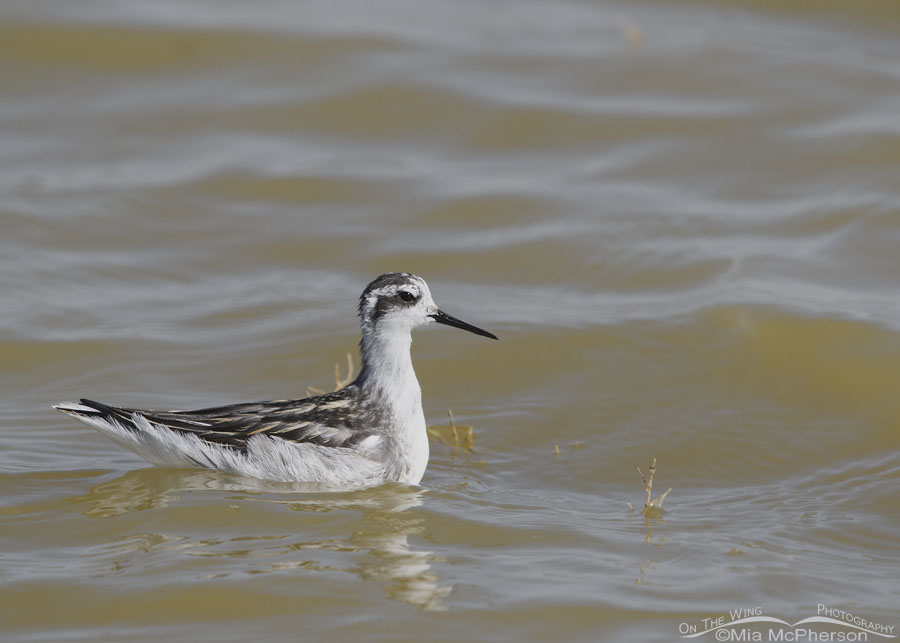 Red-necked Phalarope in nonbreeding plumage – Nikon D500, f7.1, 1/1600, ISO 500, Nikkor 500mm VR with 1.4x TC, natural light
Red-necked Phalarope in nonbreeding plumage – Nikon D500, f7.1, 1/1600, ISO 500, Nikkor 500mm VR with 1.4x TC, natural light
The Red-necked Phalarope was also in nonbreeding plumage. Both species are far more colorful in breeding plumage which I do see in the spring. In both species the females are the most colorful which is slightly unusual for birds.
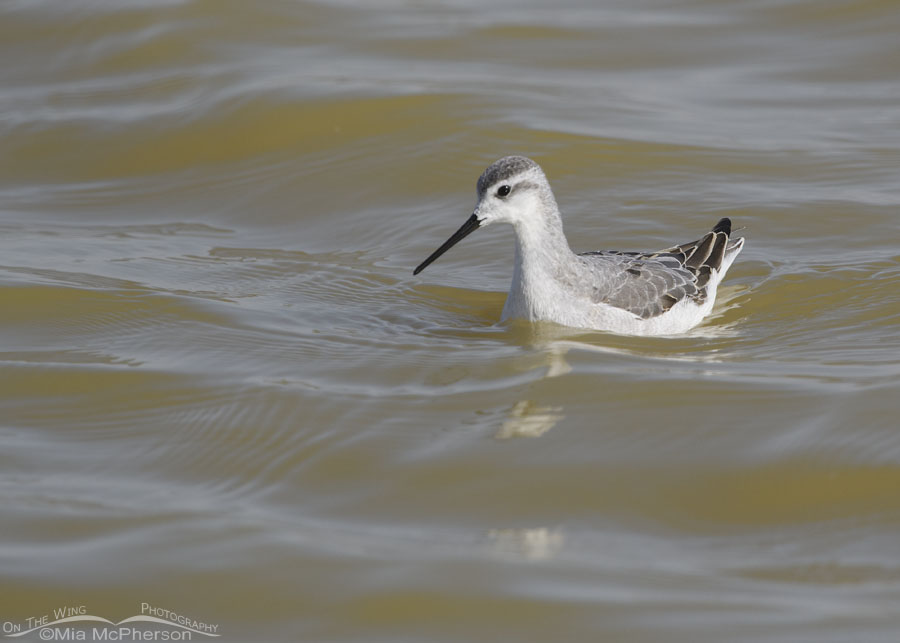 Adult Wilson’s Phalarope in the wetlands of Bear River MBR – Nikon D500, f7.1, 1/1600, ISO 500, Nikkor 500mm VR with 1.4x TC, natural light
Adult Wilson’s Phalarope in the wetlands of Bear River MBR – Nikon D500, f7.1, 1/1600, ISO 500, Nikkor 500mm VR with 1.4x TC, natural light
It is hard to tell from these images but the Wilson’s Phalarope is the larger of the two species. Both of these phalaropes were challenging to photograph because of the wind, the small waves and their quick movements.
I would have been happier with these images if the water color hadn’t been so dirty looking. I’m still happy that I got to photograph both species.
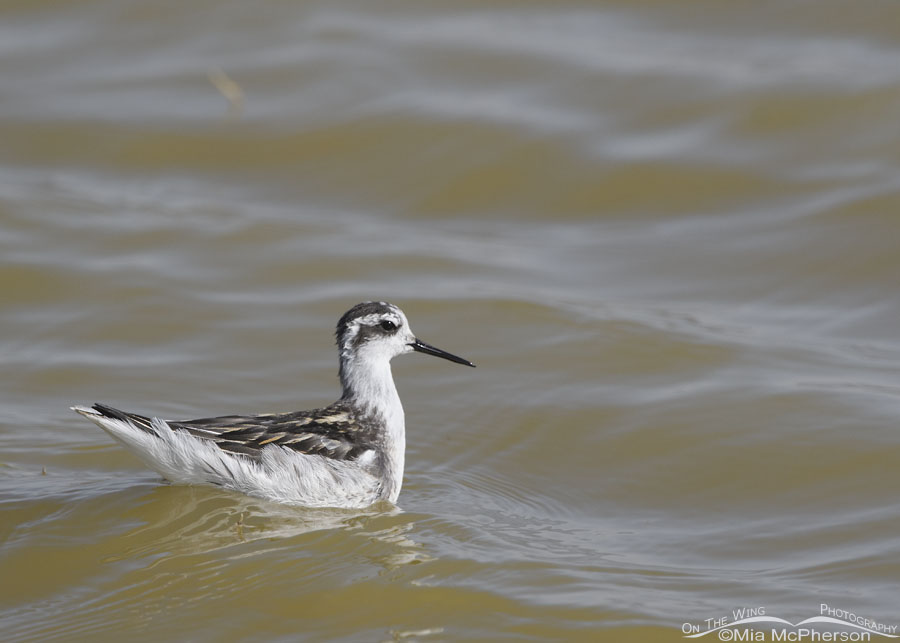 Foraging Red-necked Phalarope – Nikon D500, f7.1, 1/1600, ISO 500, Nikkor 500mm VR with 1.4x TC, natural light
Foraging Red-necked Phalarope – Nikon D500, f7.1, 1/1600, ISO 500, Nikkor 500mm VR with 1.4x TC, natural light
One day both phalarope species may avoid coming to this area at all depending on whether we can save the Great Salt Lake from drying up and becoming a toxic dust bowl.
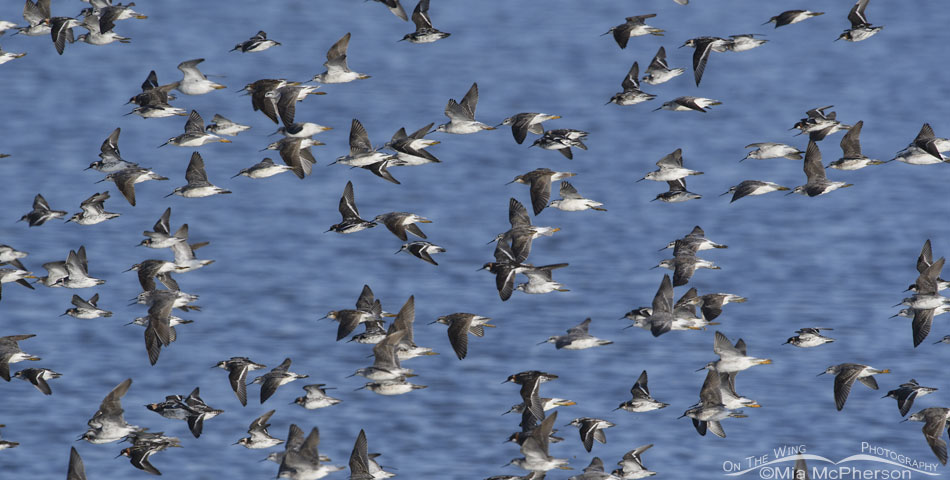 Red-necked and Wilson’s Phalarope flock in flight in 2020 – Nikon D500, f7.1, 1/1600, ISO 500, Nikkor 500mm VR with 1.4x TC, natural light
Red-necked and Wilson’s Phalarope flock in flight in 2020 – Nikon D500, f7.1, 1/1600, ISO 500, Nikkor 500mm VR with 1.4x TC, natural light
Why the Great Salt Lake is important for these phalaropes
Both Red-necked and Wilson’s Phalaropes depend on being able to refuel on the Great Salt Lake during their migrations through Utah. They feed on the brine shrimp and brine flies in the lake. The more the Great Salt Lake dries up the higher the salinity will become. At some point the lake could soon become too saline for the brine shrimp to exist. The phalaropes would then need to find food elsewhere. I hope it never comes to that but honestly I can’t say it won’t happen.
Life is good but we need to do a better job of taking care of this planet for it to remain that way.
Mia
In case you were wondering how I can tell the two species apart in flight from a distance I did a post on that here.
Click here to see more of my Red-necked Phalarope photos plus facts and information about this species. Click here to see more of my Wilson’s Phalarope photos plus facts and information about this species.


Interesting comparison of the 2 Pharlarope species. Without your wonderful pics and narrative I wouldn’t have known the difference. Thanks Mia.
Neat find and wonderful photos!
We definitely need to start taking better care of the planet. World wide. And soon.
Love these shots.
Been away, very dry here in the East!
Good spotting!
Because the Great Salt Lake is so salty, it seemed unlikely water would be siphoned off for crops and homes– but apparently that’s been going on for years.
https://www.nbcnews.com/science/environment/race-great-salt-lake-will-enough-rcna14723